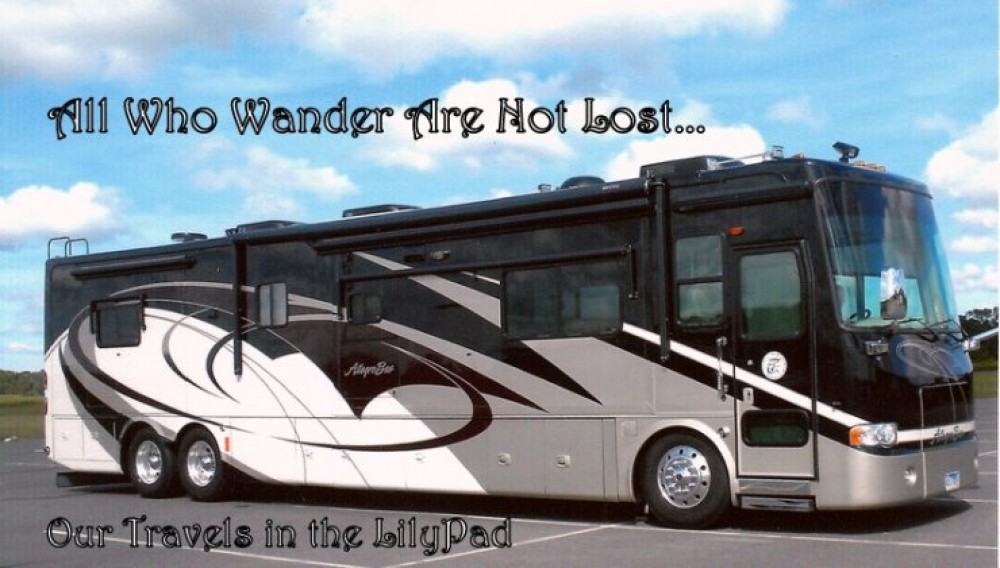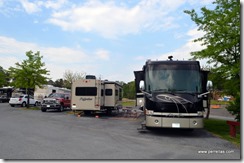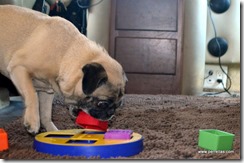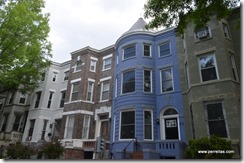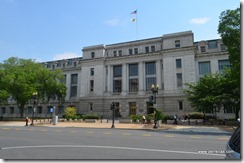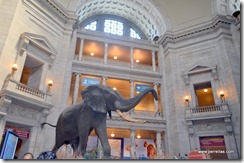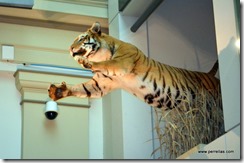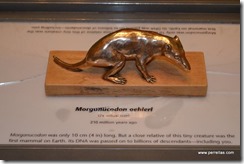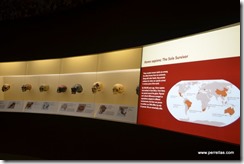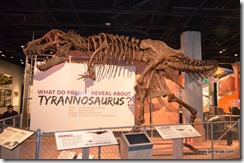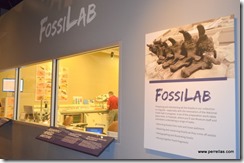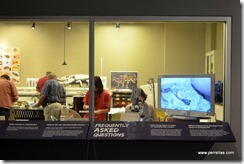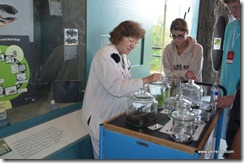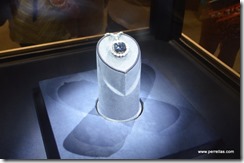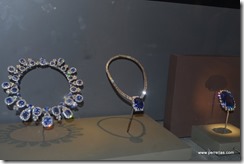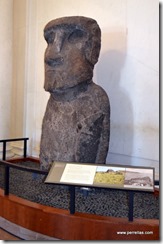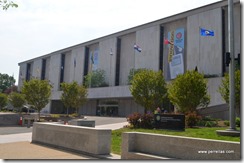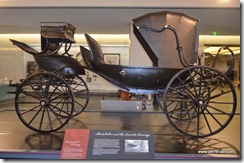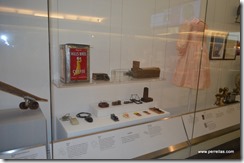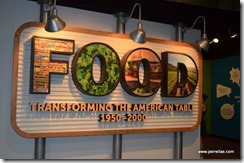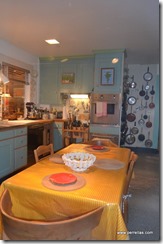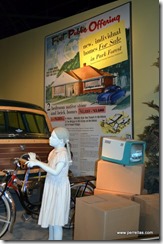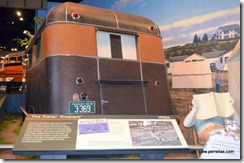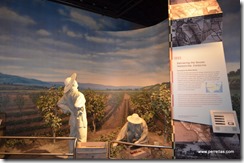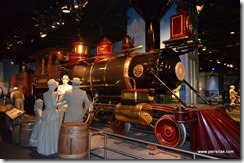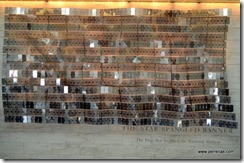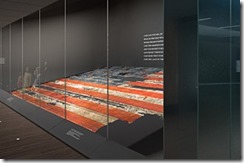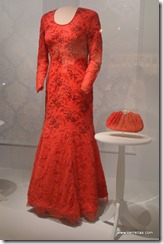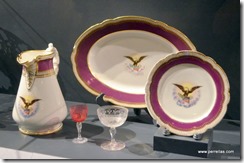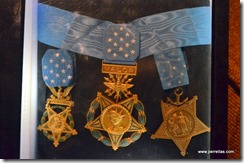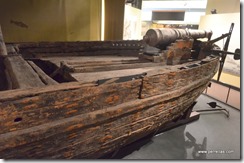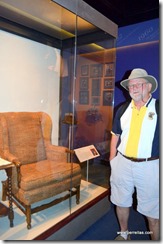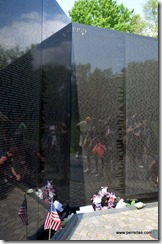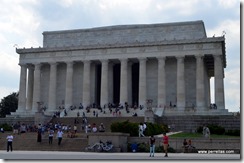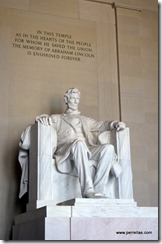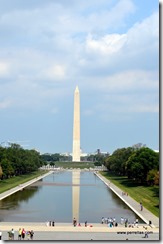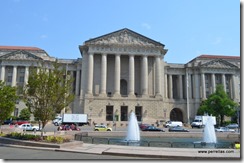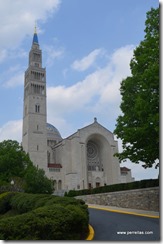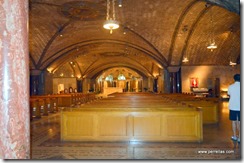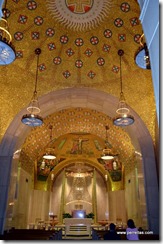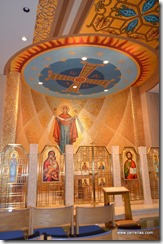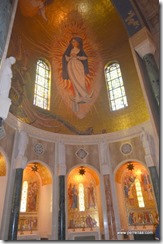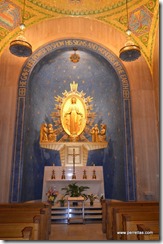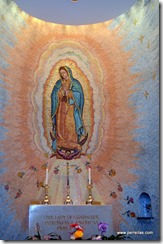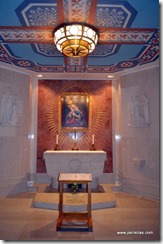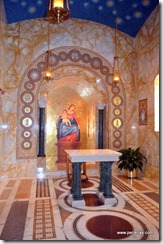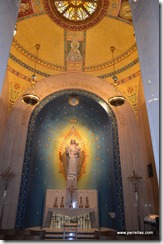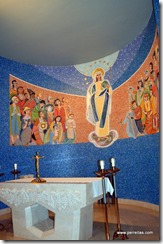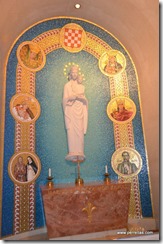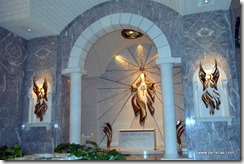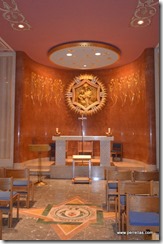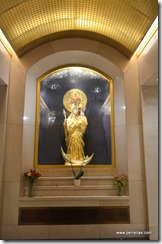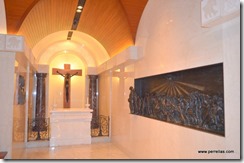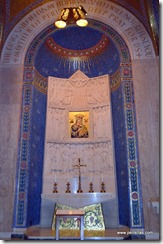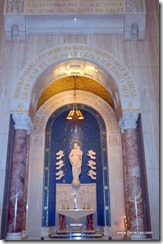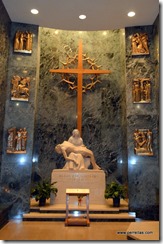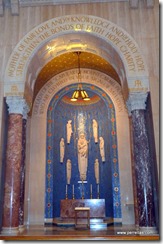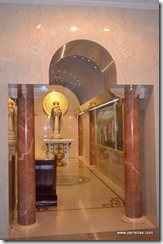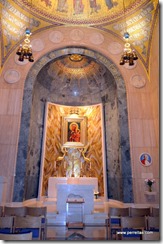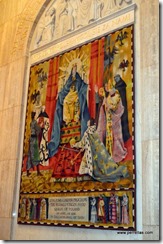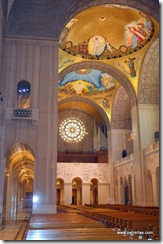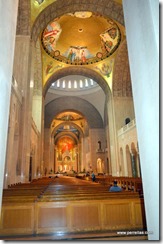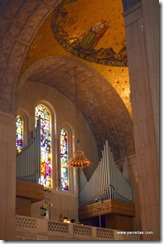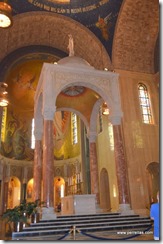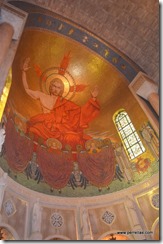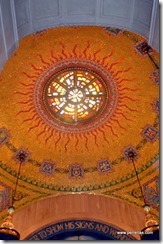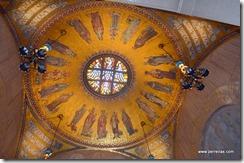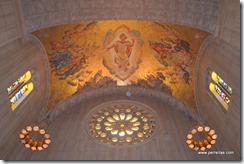Arriving at Cherry Hill Park RV in College Park Maryland near Washington D. C. we OK’d the “standard” pull through. In hindsight, that bad decision left us squished into our paved stretch of land with only a narrow strip between us and our neighbors. Taking up most of that narrow strip were two picnic tables on brick pavers, side by side, requiring us and our neighbors to scooch sideways past the tables to reach our cars parked in the rear. Same price as the luxury Las Vegas Motorcoach Resort but that’s where any and all comparisons end. It is a destination park only because of its “Location, Location, Location” to Washington D.C. They do have many amenities for family camping but only one that we need or will use. Within constant ear shot of the freeway and under a helicopter and airplane pathway, the noise is constant until about midnight.
The amenity we planned to use was the dog sitter who will walk your fur baby while you are away enjoying Washington D.C. KatieBug focused her attention on extracting goodies from her new puzzle while we set up camp.
Originally, I had planned to paint the town red when we arrived in Washington D.C. However, for the past month, my lungs have had plans of their own and I remain highly medicated and must try to avoid all diesel, dust and pollen. Those strict requirements disallow tour buses and excessive walking along the streets of D.C.
Took advantage of the sitter, ignored staff warnings that garage parking was expensive and street parking was impossible to find, didn’t want to set off my lungs with bus fumes so we drove ourselves into the city. Housing along our travels began to take on a vintage New England look.
Upon arriving at the Smithsonian Museum of Natural History, we pulled into street parking ($5.00 for 4 hours) across from the museum and spent several hours wandering the museums multi-level exhibits. Were we lucky or what!
Visiting many of these types of museums in past years, the price being gratis and with the amount of superbly displayed and fascinating pieces available, excellent is a worthy description. We arrived ahead of the bus loads of school children and strolled along at a leisurely pace enjoying each section.
The large elephant that filled the grand entrance hall was the main focus of the crowd’s attention. The African section had various stuffed creatures jumping out of wall openings and suspended above our heads.
Further into the African section was a highlighted little rodent that science claims was the start of humankind and has the same DNA traits as modern humans.
A display of real sculls, ranging from the beginning of the human race to modern man, was accompanied by a fascinating movie of our origins.
Always eager to explore fossils, our attention was drawn to the large bones in the distance.
Next section was the fossil exploration with docents exhibiting samples and microscope viewing of specimens from ongoing explorations. Very cool!
Another docent was allowing passerby’s the chance to hold various insects. Very popular with the boys. Loved the hissing cockroach!
Sparkly flashes caught my eye and we were drawn into the National Gem and Mineral Collection section. At the entrance, The Hope Diamond, donated to the museum by Harry Winston in 1958, the world’s most famous gem. Discovered in India from the Kollur Mine, it weighs in at 45.52 carrots and is estimated to be worth 250 million. Renowned for its flawless clarity, rare deep blue color and notorious history, it is surrounded by 16 white diamonds and suspended from a platinum chain containing 46 more diamonds. The first historical records hint that a French merchant named Jean-Baptiste Tavernier obtained the stone in the mid-1600’s. Recut from the French Blue diamond after 1791, it was slightly reshaped by Harry Wilson between 1949 and 1958 before he made the donation to the Smithsonian. I stood watching as it turned round and round, viewers speaking in hushed tones praising its exquisiteness.
On to the next room, one of royal jewels and a display that held my birthstone, the sapphire, some of the biggest I’ve ever seen.
Exiting the side door we stopped to check out the stone heads that stood guard on each side of the door.
At days end we drove back to LilyPad for a relaxing evening once the planes, helicopters and traffic noise died down. Sitter notes complimented KatieBug for being a sweet, very good little girl who enjoyed her mid-day walking adventure.
Next morning we duplicated our form of transportation into the city, same luck with street parking less than a block away from the Smithsonian Museum of American History and steps away from the IRS Building.
More than a decade of John testifying during IRS audits for the company from which he retired, John thought it appropriate to take a picture of the Washington D.C. IRS building while pointing. After the IRS showed up at our home and asked to enter and talk to me about the company, I think pointing with his middle digit would have been more appropriate.
With busloads of school children only steps behind, we arrived at the entrance of the museum. Same gigantic structure of a building as yesterday but broken down into smaller sections which became increasingly crowded as the day advanced.
Proudly displayed inside the entrance is Abraham Lincoln’s carriage, the carriage taken to Ford’s Theater in Washington, D.C. on the evening of April 14, 1865, the night of his assassination.
The carriage, an open barouche model, was built by Wood Brothers in 1864 and presented to Lincoln by a group of New York merchants shortly before the president’s second inauguration. Luxuriously built with solid silver lamps, door and hubcaps, the steps are connected to the doors so that they lower and rise as the door opens and closes.
The entrance was filled with small exhibits, famous guitars over the years, TV’s from the 50’s to present, radio’s and record players, card and board games through the ages and a display of attempts to build a better mouse trap.
American dining habits changed drastically in the 1950’s. Home cooked meals gave way to TV dinners and ads gleefully claimed “you deserve a break today at McDonalds”. Fast foods became the latest fad replacing the sit down family dinner.
In the 1960’s, Julia Child introduced Americans to French cuisine, the European way of dining and offering wine with meals. She told home viewers it was “part of the food chain”. Her kitchen is an amazing collection of every cooking tool, appliance, pot and pan you could imagine being needed to assemble a culinary delight.
One of the displays showed Americans moving into Suburbia, the new trend of the 1950’s. My parent’s first tract home, my first bike and our first TV looked similar to those in the display. Feeling old.
The term “trailer trash”, a derogatory American term for poor people living in a trailer, was used to denigrate white people living in such circumstances. The term got its start in the 1930’s when families were forced to move from their homes, no jobs to be found in their towns. The lifestyle allowed families to travel to areas where work was available. Many stayed together in campgrounds for greater safety. Although the term “trailer trash” still exist, it rarely applies to the over 1.3 million people today living full time in trailers, motorhomes and campers. The cost of present day rolling homes of race car drivers and entertainers easily exceed one million dollars.
My childhood roots being in California, this scene was included because my parents traveled frequently through Watsonville, me in the back seat looking out over miles of fields, migrant workers bent over planting or pulling the seasonal crops. This scene was taken from 1895. When we drove through the area last year, it looked the same. Totally drove home the meaning of “some things never change”.
We enjoyed the displays of vintage cars and trains from the 1800’s.
One of the oldest American flags, hand sewn by Mary Pickersgill in 1813 and flown over Fort McHenry on September 14, 1814, is on permanent display at the Smithsonian. The flag was raised to celebrate a crucial victory over British forces during the War of 1812. The sight of those “broad stripes and bright stars” inspired Francis Scott Key to write a song that eventually became the United States national anthem. America’s first flag is attributed to the hand stitching skills of Betsy Ross but historians now disagree as the story was passed down through her family and several facts are arguable. The flag that became the Star-Spangled Banner was a 30 x 42 foot garrison flag. Pictures of the flag are not allowed so I pulled one from the internet and included a photo of the attractive art rendition in the hall.
One large section of the museum held the inaugural dress display. Laura Bush’s 2001 Inaugural dress, a crystal embroidered Chantilly lace of ruby-red, in my opinion, was the most attractive gown in the hall. Along with the description of her dress was the achievement of her speaking out for the women in Afghanistan in the first presidential weekly address ever given by a First Lady.
The State China Service section of presidential memorabilia contained one place setting of each President’s dinnerware beginning with Abraham Lincoln. In 1861 Mary Lincoln chose French porcelain with its fashionable “solferino” color and United States Coat of Arms. The place settings were on loan from the White House collection.
War memorabilia from every war in which the US fought, not displays that were high on my list, was one of the largest sections. John wanted time to peruse so I sat and watched a few films of the entertainment industry’s contribution to wars. Artillery, ammunition, food, clothing and several short films along with life-size scenes from “the big one”, historically world war II, dominated the section. One display that did interest me was a vintage sample of the first Army, Navy and Air Force Medals of Valor. None from the Marines as they were originally under the Navy.
Another interesting room contained the Philadelphia, a gunboat manned by Continental Army soldiers that was part of a fleet under the command of General Benedict Arnold and the oldest American fighting vessel in existence. It sunk in the Battle of Valcour Island on October 11, 1776 fighting a larger Royal Navy fleet on Lake Champlain.
It was discovered in 1935 with its mast barely 15 feet under the water in Valcour Bay after almost 160 years. It remained there until an amateur military marine archeologist, Lorenzo Hagglund, located the remains and lifted it from the water with slings to preserve its hull. It became part of the Smithsonian’s permanent collection after being bequeathed in 1961.
All In The Family ranked number one in the yearly Nielsen ratings from 1971 to 1976 and was the first TV series to reach that milestone. The show broke ground in its depiction of racism, homosexuality, women’s liberation, rape, religion, miscarriage, abortion, breast cancer, the Vietnam War, menopause and impotence, topics previously not considered appropriate for comedic sitcoms.
Encased in glass, Archie Bunker’s chair was an immensely popular item with photo flashes going off continuously. A staple of nighttime TV for John and I as young adults, neither wanted to pass up a chance to view the worn out fabric chair with its grease stained head rest indentation. That one ugly chair induced uncomfortable feelings of the fact that we had reached senior status.
Left the museum area to try our luck at finding street parking to visit memorials. Searching down two blocks availed a spot on the main thoroughfare. Several memorials were a slight wander through tree lined grounds along a paved footpath.
In the midst of dozens of students on field trips, we approached the Vietnam Veterans Memorial Wall slowing down to read names and reflect on the riddance of a turbulent war that stretched from my childhood through to adulthood. Dedicated in 1982, visitors before us left floral, flag, written poem and stuffed animal offerings along its lengthy pathway.
Soldiers and war heroes who fought an unpopular war and were shunned upon returning, we felt sadness for the loss of life, sadness for the treatment of those who returned and sadness that nothing positive came from a war that lasted from 1955 until April 30, 1975. Few were able to stand in the presence of the engraved black marble wall without tears welling.
Less than a city block away stood the Lincoln Memorial Building.
The massive columned building held the famous seated statue, Abraham Lincoln, comfortably positioned in his chair, looking as if he were waiting for someone to arrive.
We had an excellent view of the Washington Monument and its reflection in the Lincoln Memorial Pool from the top of the Lincoln Memorial stairs.
Homeward bound work traffic overcame us on the journey back to LilyPad but the beauty of the massive columned buildings made the extended travel time through downtown enjoyable.
More than 19 free museums are available to the public in downtown Washington D.C. and many are large enough for a full day’s exploration. Along with museums are the War Memorials and formidable statue structures that can be seen rising up into the sky from the streets of downtown. Our three day layover was not near enough time for a fulfilling D.C. adventure which means we shall return.
Our plan for our third day was to sleep in, relax in the morning then explore in the afternoon. As John chose our explorations the last two days, today was my choice. There are dozens of churches in D.C. but I was drawn to the description of the “Big Mama”, Basilica of the National Shrine of the Immaculate Conception. Be forewarned, I took an excessive amount of photos of this exceptionally opulent church, enough so that I wouldn’t be craving religious structures in any form, anytime in the near future.
A Roman Rite Catholic basilica with architectural styles of Byzantine Revival and Romanesque Revival, evident at first sight. Building of the Shrine began in 1920 and it opened, unfinished, in 1959 and then was completed in 1961. Built from marble and totally free of structural steel, its imposing façade sits atop a hill.
The Shrine has two floor, the Crypt Level below and the Upper Church. They encircle 70 side chapels and all tolled, the church seats six thousand people. The chapels are tucked into alcoves along both levels.
The Crypt Level holds the remains of the only human buried in the Shrine. Bishop Thomas J. Shahan, the founder of the National Shrine, has a marble recumbent likeness as you enter the first of the side chapels.
Blessed Sacrament Chapel, Byzatine-Ruthenian Chapel, Glorious Mysteries chapels
Everywhere you look there are magnificent religious art scenes to gaze upon while following the free audio tour.
Miraculous Medal
The grandest are the mosaics, glittering of gold and brilliantly polished miniature tiles.
Our Lady of Guadalupe, Our Lady of Brezie, Our Lady of Pompeii
Our Lady of Siluva, Mary Queen of Missions, Our Lady of Bistrica
I love visiting churches. Not only for the peace and tranquility it brings to your soul but for the art work and this colossal shrine to the Mother Mary is loaded with incredibly detailed art work.
Our Lady of Hope,
Immaculate Heart of Mary, Our Lady of Good Health
Jesus on the Cross
Mother of Perpetual Help, Mary Help of Christians
Mother of Sorrows
Our Lady of Mount Carmel, Our Lady of La Vang, Our Lady of Czestochowa
A wall tapestry so fine in detail it appeared, from a distance, to be a painting.
We spent over an hour walking along the Crypt floor before turning our attention to the main church. When we pivoted to face the alter, at that moment, the organ player begin practice and the thunderous chords startled us both.
Resounding without echo, the chords continued for a full 15 minutes before suddenly dropping into complete silence.
The Baldachin Alter stood majestically center stage
Consuming the loftiest expansion of the ceiling, a glittering mosaic of Jesus floated with arms outstretched, glairing down at his followers. Not the calm loving facial expression I was expecting! Must have been done in the days where priests warned their parishioners that sin would pitch them into the fire and brimstone of Hell.
Turning our attention upwards to the ceilings, a stunning mosaic and stained glass sun shone overhead.
A circle of saints, The Last Judgment
Our tour was at an end and we both thought viewing all the magnificent religious art was time well spent. A short ride back to LilyPad to pack it all up, get a good nights sleep and leave for Massachusetts, our next work adventure, first thing in the morning. A plus this time, we are going to get paid a salary for 12 straight hours, two days a week. A whole $5.00 per hour! OK, you can stop laughing now…….
